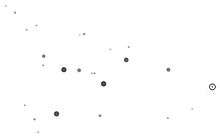Iota Cassiopeiae
| Observation data Epoch J2000.0 Equinox J2000.0 | |
|---|---|
| Constellation | Cassiopeia |
| Right ascension | 02h29m04.0s |
| Declination | +67°24′09″ |
| Apparent magnitude (V) | +4.64/+6.89/+8.40 |
| Distance | 141.6 ± 4.9 ly (43.4 ± 1.5 pc) |
| Spectral type | A3Vp/F5V/G7V |
| Other designations | |

Iota Cassiopeiae (ι Cas, ι Cassiopeiae) is a star system in the constellation Cassiopeia. It is approximately 141.6 light years from Earth.
The primary component, ι Cassiopeiae A, is a white A-type main sequence dwarf with a mean apparent magnitude of +4.64. It is classified as an α² Canum Venaticorum type variable star and the brightness of the system varies from magnitude +4.45 to +4.53 with a period of 1.74 days. Component A is a spectroscopic binary. Its unresolved companion has an orbital period of 52.4 years and is separated from the primary by 0.113 arcseconds, or at least 5 AU.
The second astrometric component, ι Cassiopeiae B, is a yellow-white F-type main sequence dwarf with an apparent magnitude of +6.89. It is 2.27 arcseconds, or at least 100 AU, from the primary. It has an orbital period of 840 years. The third astrometric component, ι Cassiopeiae C, is a yellow G-type dwarf, with an apparent magnitude of +8.40. It is 7.3 arcseconds (at least 300 AU) from the primary.